By Yuji Terajima | Published digitally by Kodansha Comics
 Eijun Sawamura really wanted to make some good baseball memories with his middle-school friends, but even though they practiced hard, they couldn’t win a single game. Although he shows talent as a pitcher, his unsportsmanlike behavior after a bitter defeat means most of the good baseball schools are no longer interested in him. And, because he is a hot-headed yet enthusiastic idiot, he totally forgot about the entrance exams required for other schools.
Eijun Sawamura really wanted to make some good baseball memories with his middle-school friends, but even though they practiced hard, they couldn’t win a single game. Although he shows talent as a pitcher, his unsportsmanlike behavior after a bitter defeat means most of the good baseball schools are no longer interested in him. And, because he is a hot-headed yet enthusiastic idiot, he totally forgot about the entrance exams required for other schools.
Luckily, Rei Takashima pays a visit and scouts him for Seido High, a big-name school in Tokyo that’s been to Koshien many times. He’s torn between testing his skills in this new world (the baseball club has over 100 members vying for nine positions on the roster, so competition is fierce) and loyalty to his old friends, but after they encourage him to seize the opportunity, he’s off to Tokyo. Of course, because he is such a hot-headed yet enthusiastic idiot, he clashes with the strict coach right away, flubs a chance to show off his pitching potential, and is barred from participating in practice.
After the Spring Tournament, in which Seido’s lack of a pitching ace becomes obvious, Eijun gets one more chance to show what he can do in a first-years versus upperclassmen game. The upperclassmen immediately dominate but Eijun isn’t intimidated or discouraged,  and the second volume ends with the cliffhanger… will he and another first year succeed in scoring against overwhelming opponents?
and the second volume ends with the cliffhanger… will he and another first year succeed in scoring against overwhelming opponents?
So far, Ace of the Diamond is a lot of fun. I can’t claim that Eijun’s personality type is especially endearing, but he’s got his admirable qualities, too. More, though, I am having fun with the rapidly expanding cast. Beyond the upperclassmen, which include Eijun’s roommates at the dorm and a genius catcher with a troublemaking streak, we also meet Satoru Furuya, another first-year pitcher who’ll likely become Eijun’s fiercest rival; Haruno Yoshikawa, a clumsy first year manager and presumed love interest; and Haruichi Kominato, a diminutive wallflower with a talent for precision batting.
The pace is fast, the characters are fun, the protagonist has a lot of room to grow, the series is 47 volumes long with a sequel… All of that sounds spectacular for a sports manga geek like me. Thank you, Kodansha!
Side note: I keep wanting to call this series Aim for the Ace!, but that’s something completely different. (I still really want to read it, though.)
Ace of the Diamond is complete with 47 volumes. However, a sequel series—subtitled Act II—is still running. The seventh volume came out in Japan last week.
Review copies provided by the publisher.

 I spent all my time wondering “what if,” then one day I woke up and I was 33.
I spent all my time wondering “what if,” then one day I woke up and I was 33. Chihayafuru is a long-running josei sports manga series about a girl who discovers a passion for the Japanese card game,
Chihayafuru is a long-running josei sports manga series about a girl who discovers a passion for the Japanese card game,  In the opening scene of Wave, Listen to Me! we meet Minare Koda, an attractive twenty-something drinking too much and pouring her heart out to a guy she just met forty minutes prior. She’s ranting about her ex, Mitsuo, and after a certain point, she has no recollection of events. To her surprise, when she’s at work the next day (as a waitress in a curry shop), she hears her own voice being played over the radio. Turns out, the guy she met was Kanetsugu Mato, who works for a radio station and recorded their conversation. (One of the things she’d forgotten was drunkenly giving her consent.) Minare is temperamental and feisty, so when she marches down to the station to give him a piece of her mind, she ends up going live on the air and impressing Mato with her facility for impromptu eloquence.
In the opening scene of Wave, Listen to Me! we meet Minare Koda, an attractive twenty-something drinking too much and pouring her heart out to a guy she just met forty minutes prior. She’s ranting about her ex, Mitsuo, and after a certain point, she has no recollection of events. To her surprise, when she’s at work the next day (as a waitress in a curry shop), she hears her own voice being played over the radio. Turns out, the guy she met was Kanetsugu Mato, who works for a radio station and recorded their conversation. (One of the things she’d forgotten was drunkenly giving her consent.) Minare is temperamental and feisty, so when she marches down to the station to give him a piece of her mind, she ends up going live on the air and impressing Mato with her facility for impromptu eloquence. Volume two is where things really get great. Mato has inventive ideas for Minare’s show, and I think I will let readers discover those for themselves. What I really loved, though, was the continued exploration of Minare’s personality. For example, when she has the jitters and receives reassurance, she cries, “I can feel it rushing back! My usual baseless, overflowing confidence!” She might have come off as an unsympathetic and abrasive character, but that line shows that she’s fully aware of her flaws. Later, after a brief (and awesome) reunion with Mitsuo, she displays a knack for more self-analysis, reflecting that while she usually doesn’t take shit from anyone, she has a certain weakness for pathetic guys who need someone to dote over them. I expect that this capacity for reflection will allow her to make the most of the opportunity she’s been given.
Volume two is where things really get great. Mato has inventive ideas for Minare’s show, and I think I will let readers discover those for themselves. What I really loved, though, was the continued exploration of Minare’s personality. For example, when she has the jitters and receives reassurance, she cries, “I can feel it rushing back! My usual baseless, overflowing confidence!” She might have come off as an unsympathetic and abrasive character, but that line shows that she’s fully aware of her flaws. Later, after a brief (and awesome) reunion with Mitsuo, she displays a knack for more self-analysis, reflecting that while she usually doesn’t take shit from anyone, she has a certain weakness for pathetic guys who need someone to dote over them. I expect that this capacity for reflection will allow her to make the most of the opportunity she’s been given. Widowed math teacher Kohei Inuzuka wants to do his best when it comes to raising his daughter, Tsumugi. It’s been six months since his wife passed away, and because he has never had much of an appetite and hasn’t fared well with cooking in the past, he mostly relies on store-bought fare for Tsumugi. However, after they run into one of his students, Kotori Iida, while looking at cherry blossoms, he can’t help but notice how fascinated Tsumugi is by the home-cooked lunch Kotori’s been eating. To make his daughter happy, he ends up taking her to Kotori’s family restaurant, which leads to regular dinner parties where they experiment with making different things together.
Widowed math teacher Kohei Inuzuka wants to do his best when it comes to raising his daughter, Tsumugi. It’s been six months since his wife passed away, and because he has never had much of an appetite and hasn’t fared well with cooking in the past, he mostly relies on store-bought fare for Tsumugi. However, after they run into one of his students, Kotori Iida, while looking at cherry blossoms, he can’t help but notice how fascinated Tsumugi is by the home-cooked lunch Kotori’s been eating. To make his daughter happy, he ends up taking her to Kotori’s family restaurant, which leads to regular dinner parties where they experiment with making different things together.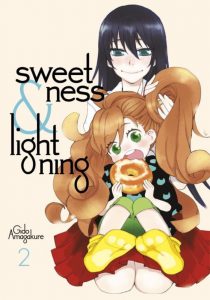 chawanmushi, and some seriously drool-inducing gyoza. Recipes are included, and for the first time, I feel like they’re actually something I might attempt.
chawanmushi, and some seriously drool-inducing gyoza. Recipes are included, and for the first time, I feel like they’re actually something I might attempt.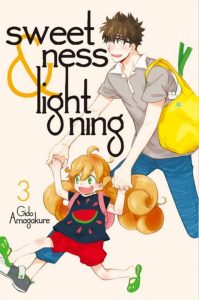 He and Kotori maintain their distance at school, and he frequently worries about inconveniencing her mother. And yet, the gatherings make Tsumugi so happy—and even lift her spirits when she begins to truly comprehend the permanence of her mother’s absence—that he gratefully accepts the Iidas’ hospitality. He behaves professionally at all times. Kotori, however, seems to be developing feelings for him, though it’s all mixed up as she sees him as both a guy and as a father figure. I wouldn’t be surprised if the manga ends with them getting married, but I hope nothing romantic ensues for a very long time.
He and Kotori maintain their distance at school, and he frequently worries about inconveniencing her mother. And yet, the gatherings make Tsumugi so happy—and even lift her spirits when she begins to truly comprehend the permanence of her mother’s absence—that he gratefully accepts the Iidas’ hospitality. He behaves professionally at all times. Kotori, however, seems to be developing feelings for him, though it’s all mixed up as she sees him as both a guy and as a father figure. I wouldn’t be surprised if the manga ends with them getting married, but I hope nothing romantic ensues for a very long time. My name is Saitama. I am a hero. My hobby is heroic exploits. I got too strong. And that makes me sad. I can defeat any enemy with one blow. I lost my hair. And I lost all feeling. I want to feel the rush of battle. I would like to meet an incredibly strong enemy. And I would like to defeat it with one blow. That’s because I am One-Punch Man.
My name is Saitama. I am a hero. My hobby is heroic exploits. I got too strong. And that makes me sad. I can defeat any enemy with one blow. I lost my hair. And I lost all feeling. I want to feel the rush of battle. I would like to meet an incredibly strong enemy. And I would like to defeat it with one blow. That’s because I am One-Punch Man.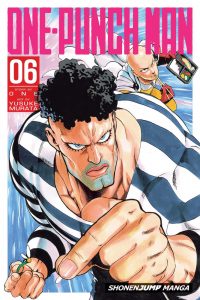 The balancing act ONE and Murata achieve here is impressive. On the one hand, One-Punch Man is gloriously silly. Heroes and foes alike are apt to be ludicrous, and some of the former have terrific names like Tank Top Vegetarian or Spring Mustachio (although I actually think he’s pretty cool). On the other hand, there is a lot of excellent shounen manga storytelling going on. The way Saitama lives his life without criticism for others makes me think he’d get along well with One Piece‘s Luffy, and the devotion his pupil Genos shows for him means they can always rely on each other. Too, after Saitama joins the Hero Association, we get regular updates on how his rank is improving, and this puts him in contact with even more heroes, some of whom are inept, some of whom are capable, and one of whom might actually be an enemy. He doesn’t seek glory, so many are unaware of his true strength, but I assume that eventually he will attain the rank he deserves (currently, due to poor performance on the written test, he’s far below Genos).
The balancing act ONE and Murata achieve here is impressive. On the one hand, One-Punch Man is gloriously silly. Heroes and foes alike are apt to be ludicrous, and some of the former have terrific names like Tank Top Vegetarian or Spring Mustachio (although I actually think he’s pretty cool). On the other hand, there is a lot of excellent shounen manga storytelling going on. The way Saitama lives his life without criticism for others makes me think he’d get along well with One Piece‘s Luffy, and the devotion his pupil Genos shows for him means they can always rely on each other. Too, after Saitama joins the Hero Association, we get regular updates on how his rank is improving, and this puts him in contact with even more heroes, some of whom are inept, some of whom are capable, and one of whom might actually be an enemy. He doesn’t seek glory, so many are unaware of his true strength, but I assume that eventually he will attain the rank he deserves (currently, due to poor performance on the written test, he’s far below Genos). As of volume eleven, there are several plotlines in play. Monsters are appearing everywhere, and appear to be organizing. Is this tied in with the prediction of an extinction-level event within the next six months? What about that hint of a possible traitor that was dropped a few volumes back? While a rogue martial artist named Garo is hunting heroes, Saitama is off at a martial arts tournament to learn more how to defeat Garo (not knowing that he totally already did) and seems destined to face off against another strong fighter who is desperate for a challenge. I admire how this story has widened in scope in a natural way, without compromising the balance of narrative and humor. It could conceivably go on for a very long time, and I deeply hope it does.
As of volume eleven, there are several plotlines in play. Monsters are appearing everywhere, and appear to be organizing. Is this tied in with the prediction of an extinction-level event within the next six months? What about that hint of a possible traitor that was dropped a few volumes back? While a rogue martial artist named Garo is hunting heroes, Saitama is off at a martial arts tournament to learn more how to defeat Garo (not knowing that he totally already did) and seems destined to face off against another strong fighter who is desperate for a challenge. I admire how this story has widened in scope in a natural way, without compromising the balance of narrative and humor. It could conceivably go on for a very long time, and I deeply hope it does. I admit that I initially judged this book by its cover, assuming that it was on the smutty side and aimed at a decidedly male audience. While it is true that Scum’s Wish is seinen, the mangaka (Mengo Yokoyari) is female, and the end result (for me, at least) feels more like dark shoujo.
I admit that I initially judged this book by its cover, assuming that it was on the smutty side and aimed at a decidedly male audience. While it is true that Scum’s Wish is seinen, the mangaka (Mengo Yokoyari) is female, and the end result (for me, at least) feels more like dark shoujo.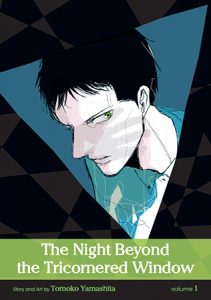 Until Olivia mentioned it over in the
Until Olivia mentioned it over in the 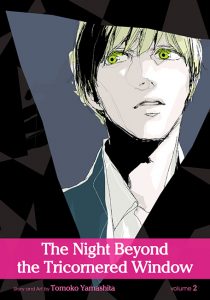 I love series like this, where the leads have episodic disturbances that they investigate (via the partnership they strike up as a sort of supernatural cleaning crew and frequently assisting a non-believing cop named Hanzawa) plus an ongoing mystery (involving curses cast by someone named Erika Hiura) and yet the most important and fascinating aspect is the relationship between the leads themselves. There are the fun, suggestive moments where the guys are combining their powers for one reason or another and end up using dialogue like, “Do you want me to touch it?” or “Take me all the way in.” But where Yamashita-sensei really excels is at teasing out threads of darkness.
I love series like this, where the leads have episodic disturbances that they investigate (via the partnership they strike up as a sort of supernatural cleaning crew and frequently assisting a non-believing cop named Hanzawa) plus an ongoing mystery (involving curses cast by someone named Erika Hiura) and yet the most important and fascinating aspect is the relationship between the leads themselves. There are the fun, suggestive moments where the guys are combining their powers for one reason or another and end up using dialogue like, “Do you want me to touch it?” or “Take me all the way in.” But where Yamashita-sensei really excels is at teasing out threads of darkness.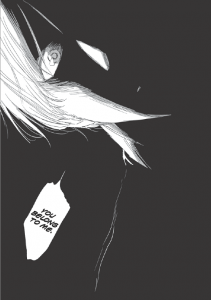
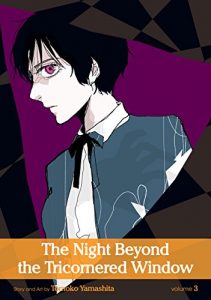 It’s only at the end of volume three, wherein Hiyakawa nonchalantly suggests that it’d be good if they could work the other side of the business, too, that Mikado realizes he has no idea what kind of person he’s working with. As a reader, I too was lulled into believing that of course the protagonist of a series about fighting the supernatural is a good guy. Turns out, he’s more of an empty-inside opportunist. At this point, even I just want to say, “Run away, Mikado! Run away and don’t look back!” Is there any hope that he can help heal and humanize Hiyakawa, or will he only end up destroyed? How soon until volume four comes out?!
It’s only at the end of volume three, wherein Hiyakawa nonchalantly suggests that it’d be good if they could work the other side of the business, too, that Mikado realizes he has no idea what kind of person he’s working with. As a reader, I too was lulled into believing that of course the protagonist of a series about fighting the supernatural is a good guy. Turns out, he’s more of an empty-inside opportunist. At this point, even I just want to say, “Run away, Mikado! Run away and don’t look back!” Is there any hope that he can help heal and humanize Hiyakawa, or will he only end up destroyed? How soon until volume four comes out?!
 After making a social blunder at school that results in being shunned by her female classmates, Komugi Kusunoki is glad of the chance to start over in Hokkaido when the demands of her mother’s job mean Komugi will need to live with her father instead. At Maruyama High School, she quickly befriends a couple of nice girls (Kana and Keiko) and learns about the small clique of hotties over whom many girls swoon but who keep to themselves. One day, she surprises one of the boys (Yu Ogami) while he is napping and he turns into a wolf who promptly boops her on the nose.
After making a social blunder at school that results in being shunned by her female classmates, Komugi Kusunoki is glad of the chance to start over in Hokkaido when the demands of her mother’s job mean Komugi will need to live with her father instead. At Maruyama High School, she quickly befriends a couple of nice girls (Kana and Keiko) and learns about the small clique of hotties over whom many girls swoon but who keep to themselves. One day, she surprises one of the boys (Yu Ogami) while he is napping and he turns into a wolf who promptly boops her on the nose.  As Komugi gets to know them better, she learns that Ogami is half human and was abandoned in the woods by his human mother. Although he doesn’t hate humans as Fushimi claims to do, and is in fact kind and sweet, he’s still determined that he is going to be the last of his line and that he won’t fall in love with anyone, which is a problem because it doesn’t take long for Komugi to fall for him. Meanwhile, Fushimi witnesses this happening and tries to spare her hurt, and when she’s later trying to acclimate to just being friends with Ogami, he’s the one who’s there for her to talk to, sparking some jealous feelings on Ogami’s part.
As Komugi gets to know them better, she learns that Ogami is half human and was abandoned in the woods by his human mother. Although he doesn’t hate humans as Fushimi claims to do, and is in fact kind and sweet, he’s still determined that he is going to be the last of his line and that he won’t fall in love with anyone, which is a problem because it doesn’t take long for Komugi to fall for him. Meanwhile, Fushimi witnesses this happening and tries to spare her hurt, and when she’s later trying to acclimate to just being friends with Ogami, he’s the one who’s there for her to talk to, sparking some jealous feelings on Ogami’s part.


Recent Comments